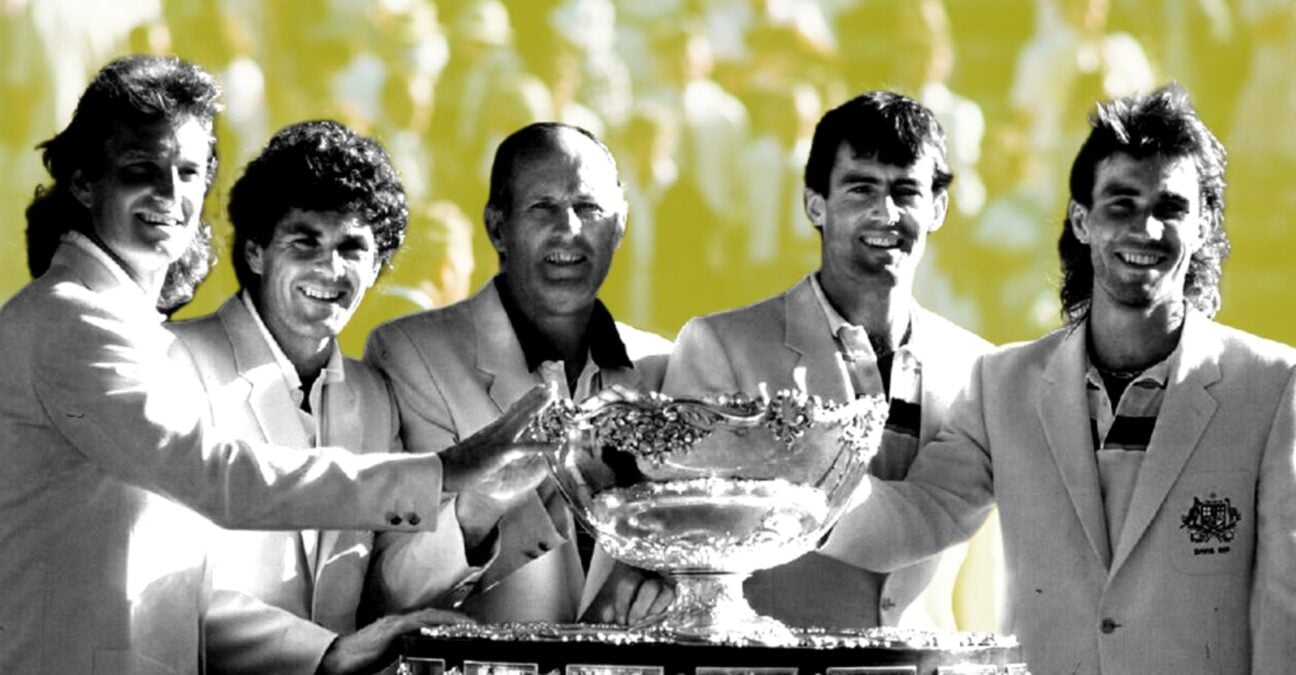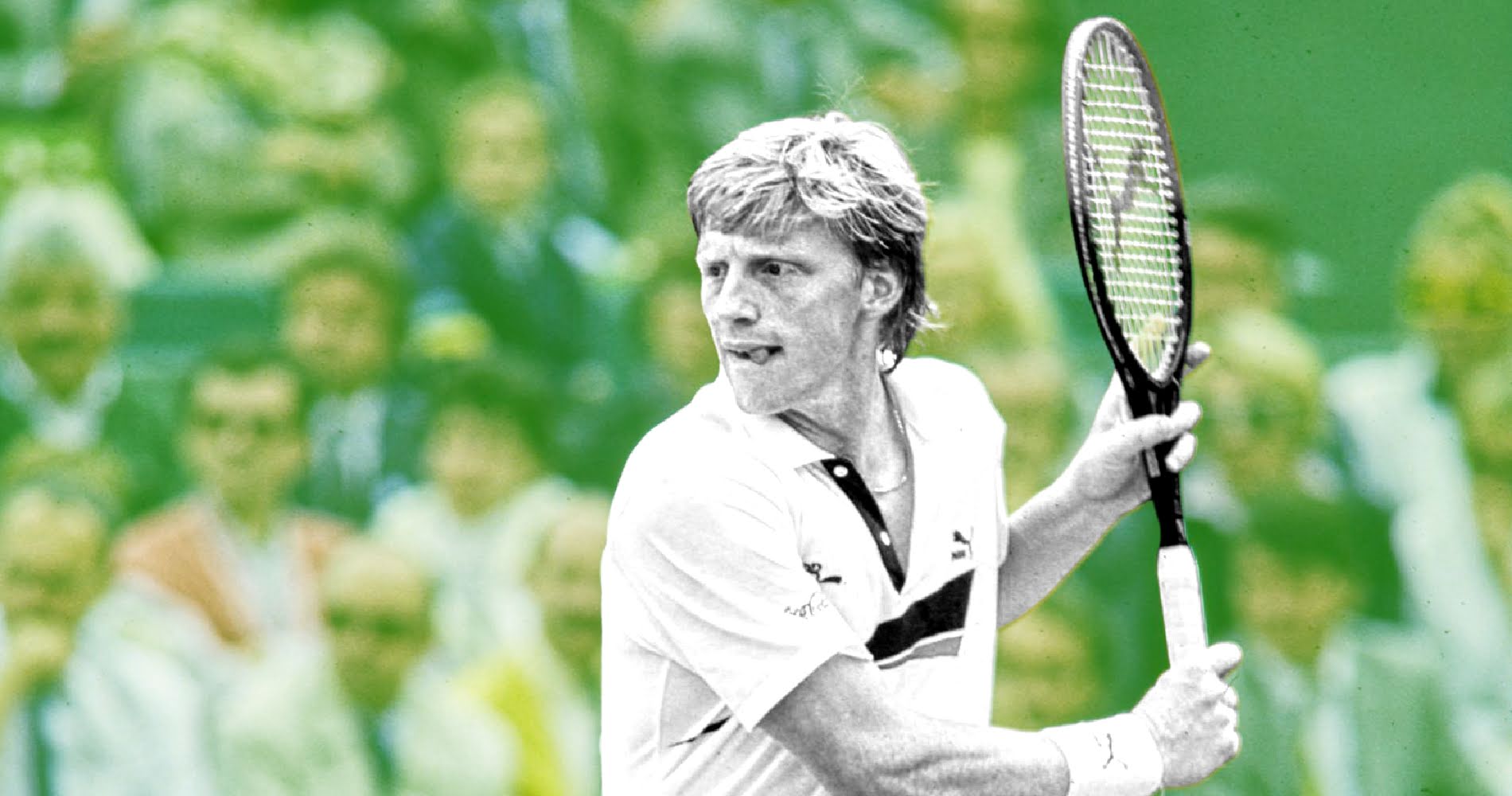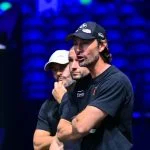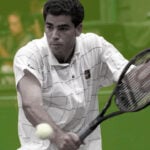December 28, 1983: The day 18-year-old Pat Cash won the pivotal match to win the Davis Cup for Australia
Every day, Tennis Majors remembers the most iconic moments in tennis history. On December 28 in 1983, 18-year-old Pat Cash took on Joakim Nystrom for a chance to win the Davis Cup in front of Australia’s Prime Minister

What exactly happened on that day?
On this day, December 28 in 1983, 18-year-old Pat Cash, the youngest player to ever play singles for Australia in a Davis Cup final, defeated Joakim Nystrom, from Sweden (6-4, 6-1, 6-1), to give his country the title for the 25th time. Playing extremely well under pressure, Cash achieved the first great feat of his career, which would peak with his triumph at Wimbledon in 1987.
The players: Pat Cash and Joakim Nystrom
- Pat Cash: the rising Australian serve-and-volleyer
In 1983, Pat Cash, born in Melbourne in 1965, was mostly known for his great results as a junior player: in 1982, he had won both Wimbledon and the US Open. The same year, he turned pro and claimed his first pro titles in his own country in early 1983, winning the Melbourne Outdoor Open and at the Mazda Tennis Classic in Brisbane, where he defeated Paul McNamee in the final (4-6, 6-4, 6-3). With his serve-and-volley game, it was no surprise that he obtained his best Grand Slam results on grass, reaching the fourth round at both Wimbledon and the Australian Open (played on grass at the time), defeated by Ivan Lendl each time in three straight sets. At the end of his first full year on the tour, Cash was ranked 38th in the world.
- Joakim Nystrom: The Swedish player who was under the radar
Joakim Nystrom, from Sweden, lived in the shadows of his more accomplished countrymen Bjorn Borg and Mats Wilander. Born in 1963, Nystrom turned pro in 1981 and the following year, he reached the fourth round at Roland-Garros, where he lost to José-Luis Clerc (7-6, 4-6, 6-0, 6-2). In 1983, he reached his first final on the tour in Munich (defeated by Tomas Smid, 6-0, 6-3, 4-6, 2-6, 7-5), and at the end of the year, after reaching the fourth round at the Australian Open, he claimed his first title in Sydney (defeating Mike Bauer in the final, 2-6, 6-3, 6-1).
The place: Kooyong, Australia
The 1983 Davis Cup final was held on grass at the Kooyong Stadium, located in a wealthy suburb of Melbourne. At the time, it was also the venue of the Australian Open, and as a consequence, the Swedish players had all entered the tournament in early December to prepare for the Davis Cup final. The Kooyong stadium could host up to 12,000 spectators for the final.
The facts: Pat Cash wins in straight sets to give Australia the title
In 1983, young Pat Cash was a part of Australia’s Davis Cup campaign for the first time in his career. He had made a heroic debut in the first round, defeating the experienced John Lloyd in five sets (5-7, 7-5, 6-3, 1-6, 7-5) as Australia defeated Great Britain. That year, Australia played every tie at home, and had chosen to play on grass each time to favour the local players who had been born and raised on this surface.
This choice had paid off and the Australian players made their way into the final without much drama, defeating Great Britain (4-1), Romania (5-0) and France (4-1). In order to win the Davis Cup for the first time since 1977, they had to beat Sweden, led by world No 4 Mats Wilander. The 19-year-old Wilander, a very consistent player, was known as a clay-court specialist without much experience on grass but he played the Australian Open in December, specifically to get ready for the Davis Cup final. To everyone’s surprise, he won the tournament, held at the same venue as the Davis Cup final, ruining the Australian team’s plan of catching him unguarded on a surface he didn’t like.
In the opening match, it was Cash, 18 years old and ranked No 38, who faced Wilander, the recent Australian Open champion. Despite his bold serve-and-volley game, Cash was defeated in four sets, 6-3, 4-6, 9-7, 6-3. However his team-mate, John Fitzgerald, levelled the tie by beating Nystrom 6-4, 6-2, 4-6, 6-4. The following day, the Australian pair of Mark Edmondson and McNamee easily prevailed against Anders Jarryd and Hans Simonsson 6-4, 6-4, 6-2 to give the Aussies the edge.
Cash now had the opportunity to clinch the title, playing the fourth rubber against Nystrom. This great opportunity came with great pressure, especially for such a young player, as in case Cash lost, it was very unlikely that Fitzgerald would be able to defeat Wilander in what would be the deciding rubber. On top of that, the match was played under the watchful gaze of Australian prime minister Bob Hawke.
Cash, who at the time, had not yet adopted his iconic chequered bandana, proved himself worthy at handling the pressure of such an important occasion, destroying Nystrom in a one-sided match, 6-4, 6-1, 6-1, in only one hour and 38 minutes. He became the youngest player to win a singles rubber in a Davis Cup final. In 2020, Cash would recall this match, in an interview for sportshistoryweekly.com:
“I was the youngest to play a final at the time. (Rafael) Nadal has since beaten that record. I have to say I was very nervous but luckily settled quickly. The match I needed to win was this one, the second singles match on the last day. Fortunately, I had the experience of being out on the court on the first day which helped. I had also won the Victorian Open on the same court a year before but I had no pressure then and let me tell you, it’s a whole different situation when the whole country is expecting a win.”
What next? Cash becomes Wimbledon champion while Nystrom reaches the top 10
Cash would win the Davis Cup a second time, in 1986, beating the Swedish team again. He would become the leading Australian player of the 1980s, claiming the Wimbledon title in 1987 (defeating Ivan Lendl in the final, 7-6, 6-2, 7-5) and reaching his best ranking of world No 4 in 1988.
Despite reaching two consecutive finals in Melbourne in 1987 (lost to Stefan Edberg, 6-3, 6-4, 3-6, 5-7, 6-3) and 1988 (lost to Wilander, 6-3, 6-7, 3-6, 6-1, 8-6), Cash would never manage to win the Australian Open in front of his home crowd.
Nystrom would reach his best ranking in 1986: that year, winning six of his 13 career titles, including the prestigious Monte-Carlo Open, he would climb as high as world No 7 and reach the US Open quarter-finals.












